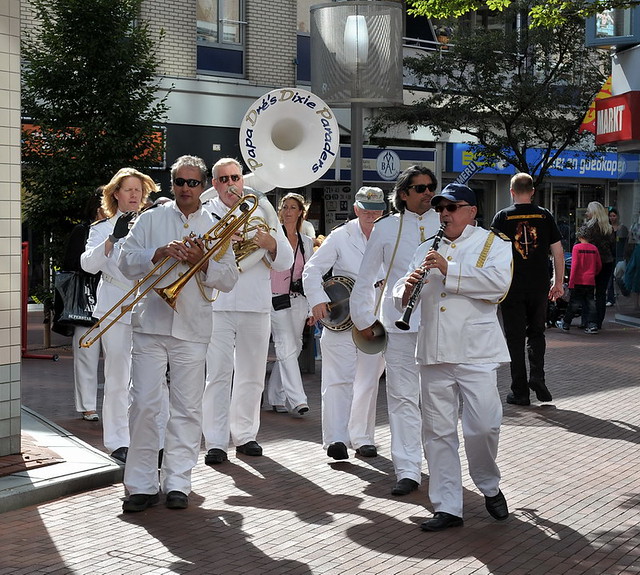In the late nineteen sixties Roy Orbison, on a concert tour of Australia, arrived in Adelaide on the same flight as the Walker Brothers. I recall watching on television the airport interview in which Roy, always the nice guy, explained how much he loved the music of Scott Walker and his fellow band members. He went on to explain that he believed Rock 'n' Roll was a passing craze which would soon die out, but that the wonderful music of the Walker Brothers would live on forever.
 |
| Roy Orbison Photo: Wikimedia |
Sadly, it was the loveable Roy himself who would soon die after such a tragic life, leaving behind a rich legacy of music that remains very popular so many years later. As for the music of the Walker Brothers, they certainly left the world with some memorable hits. "The Sun Ain't Gonna Shine Any More", "My Ship Is Coming In" and "Make It Easy On Yourself" were all Walker Brothers originals that come instantly to mind, but you can't dance Rock 'n' Roll to them.
Roy's gaff can be forgiven. Its true that the production of music in the original Rock 'n' Roll style didn't continue, although artists like Shakin' Stevens did release some pretty good tracks in the old style during the 'seventies and when Jackie Wilson's Reet Petite was re-released after his death it soared up the charts. In Australia, even Gene Chandler's Duke of Earl enjoyed a revival in the 'eighties after it was featured in a television commercial. The expected death of Rock 'n' Roll wasn't happening.
This also brings to mind a song released by one of the most successful Australian groups of the 'sixties, The Master's Apprentices. The lyrics say "Rockin', Rollin' we're still doing it now, 15 years today and we remember how." When that song was released in 1970 it was apparently remarkable that we "remembered how" after an eon of 15 years. Its now 50 years since Rock 'n' Roll first appeared and we still remember how.
Its a fair bet that Roy Orbison's early songs are played a lot more often around the world nowadays than the Walker Brothers records are. The main reason for that is simply that you can Rock 'n' Roll to them. It can have little to do with the quality of the music, since those of us who were teenagers back then have forgotten so many excellent recordings from when we were young.
Simply put, the dance preserved the music rather than vice versa. Without the lasting popularity of the energetic, versatile and easily learned dance style, the music would probably have died long ago. Perhaps not all of it, at least initially. Elvis fans will no doubt testify to the immortality of The King's music, but reality will triumph. Elvis fans are no more immortal in the flesh than he was. They too will eventually die out.
Most young people who learn Rock 'n' Roll dance nowadays have no more preference for the music of Elvis or The Beatles than they have for any of the obscure one-hit-wonders who contributed so many of the old hit records. They find Smashmouth more appealing as artists, but if an old song is good to dance to they like it no matter who recorded it. Its reasonable to assume they will preserve much of the music after we are gone, but mainly for dance purposes rather than for entertainment.
That is what has happened to other music styles. For example, the folk music that was so popular in the late 'fifties and early 'sixties has died out because you can't dance to it. On the other hand many old time tunes such as waltzes and marches remain popular today because ballroom dancing preserves them.
So, how long will Rock 'n' Roll last? No-one can tell, but the waltz dates back to 1780 and is still practiced, so our favourite dance and music style might have a couple of hundred years to live yet. Perhaps then a songwriter will compose a song in the popular style of the day entitled "Roll Over, Roy Orbison."
Author:Gareth Eastwood
















